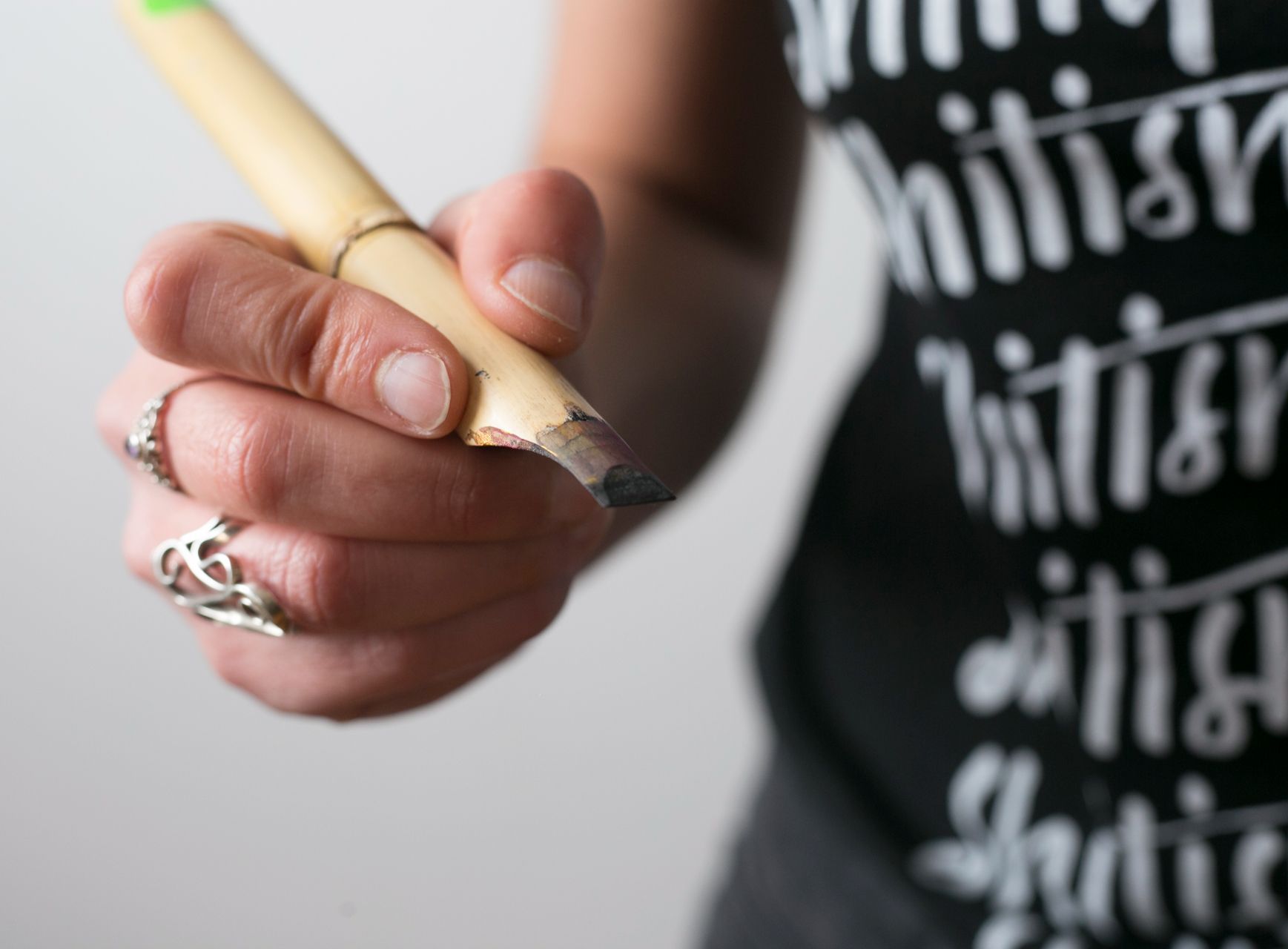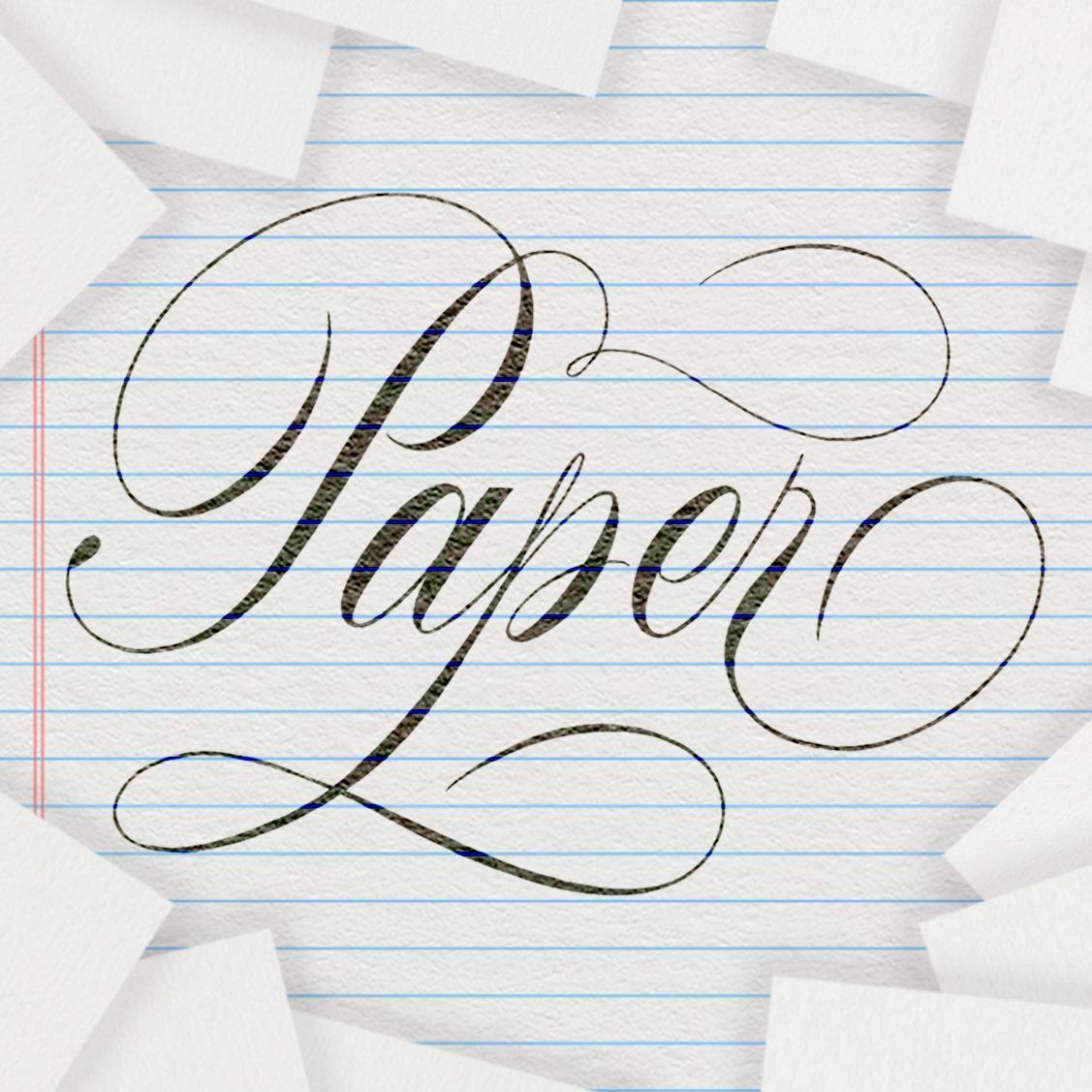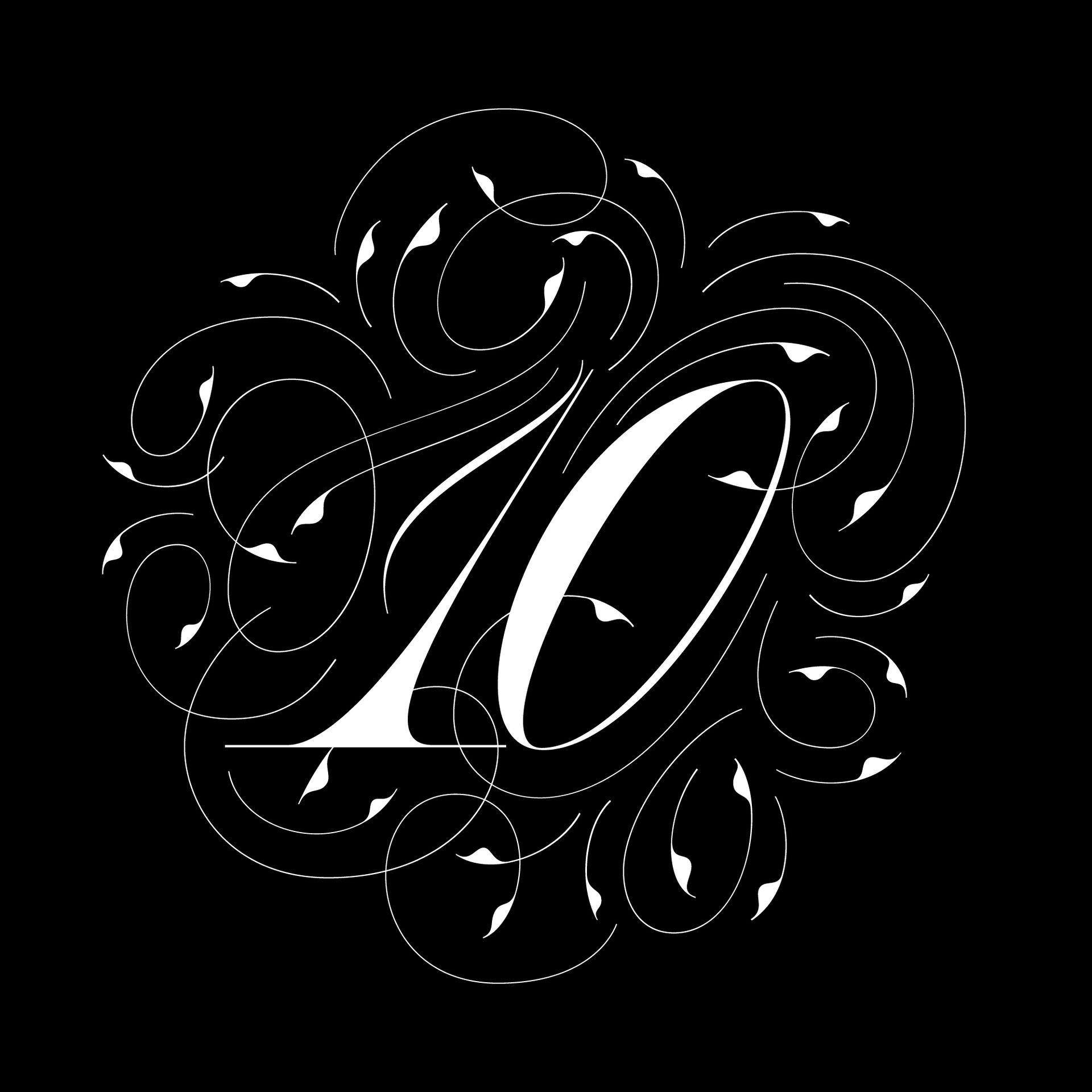From Pen to Pixels: My Journey in Calligraphy & Online Education
Recently, Online Course Host published a featured interview about my calligraphy journey from in-person courses in Naarm (Melbourne, Australia) to my current online international education. I though of sharing my insights with you in case is helpful to anyone thinking of crafting their own independent creative career.
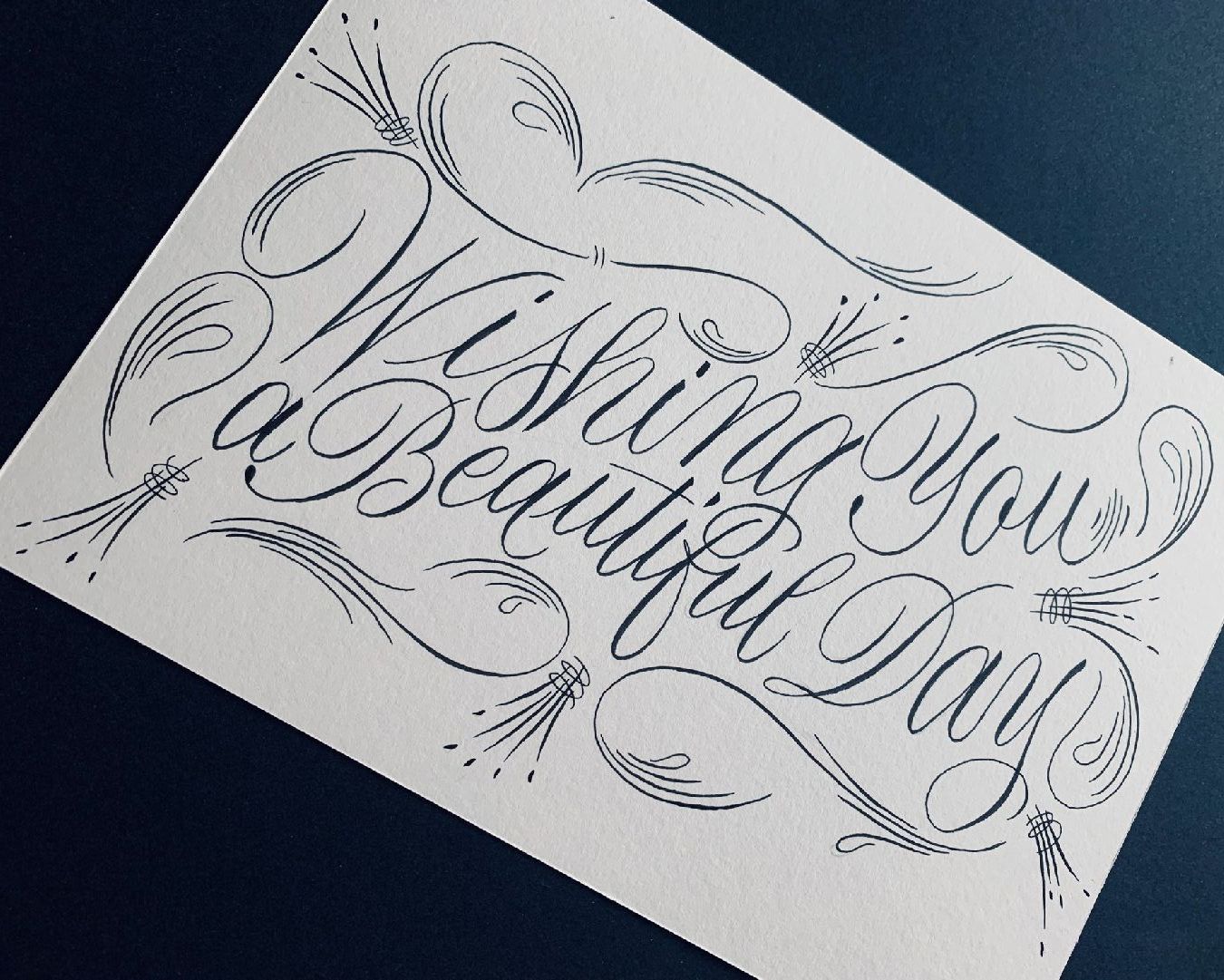
Photo credit: ‘Wishing you a beautiful day'. Script Brush Calligraphy by Maria Montes.
Can you tell us a little about yourself and the topics you teach online?
I'm a Catalan-Australian independent lettering designer, calligraphy-and-type educator.
My creative practice is set by the principles of never stop learning, sharing knowledge and create emotion through my work.
I’m in love with creativity and letterforms. For the first ten years of my career, I worked as a full-time graphic designer. My first contact with calligraphy was in 1996 —that it last century! In 2011 I went back to study typeface design where I grabbed a calligraphy pen and ink and I haven’t let it go again!
I have been teaching calligraphy independently since 2014. My favourite way of learning is by teaching others. I offer online calligraphy courses, corporate in-house workshops, as well as private one-to-one tuitions.
I currently educate students worldwide on broad-edge pen Roman Capitals, Modern Carolingian, Italic, Neuland, Copperplate and Script Brush pen calligraphy for beginner and intermediate students. I specialise in Script lettering and connected alphabets.
I have studied a Postgraduate Course in Advanced Typography and a Condensed Program in Typeface Design at Type@Cooper in NYC. In 2018 I released my first independent display chromatic font family called
Green Fairy.
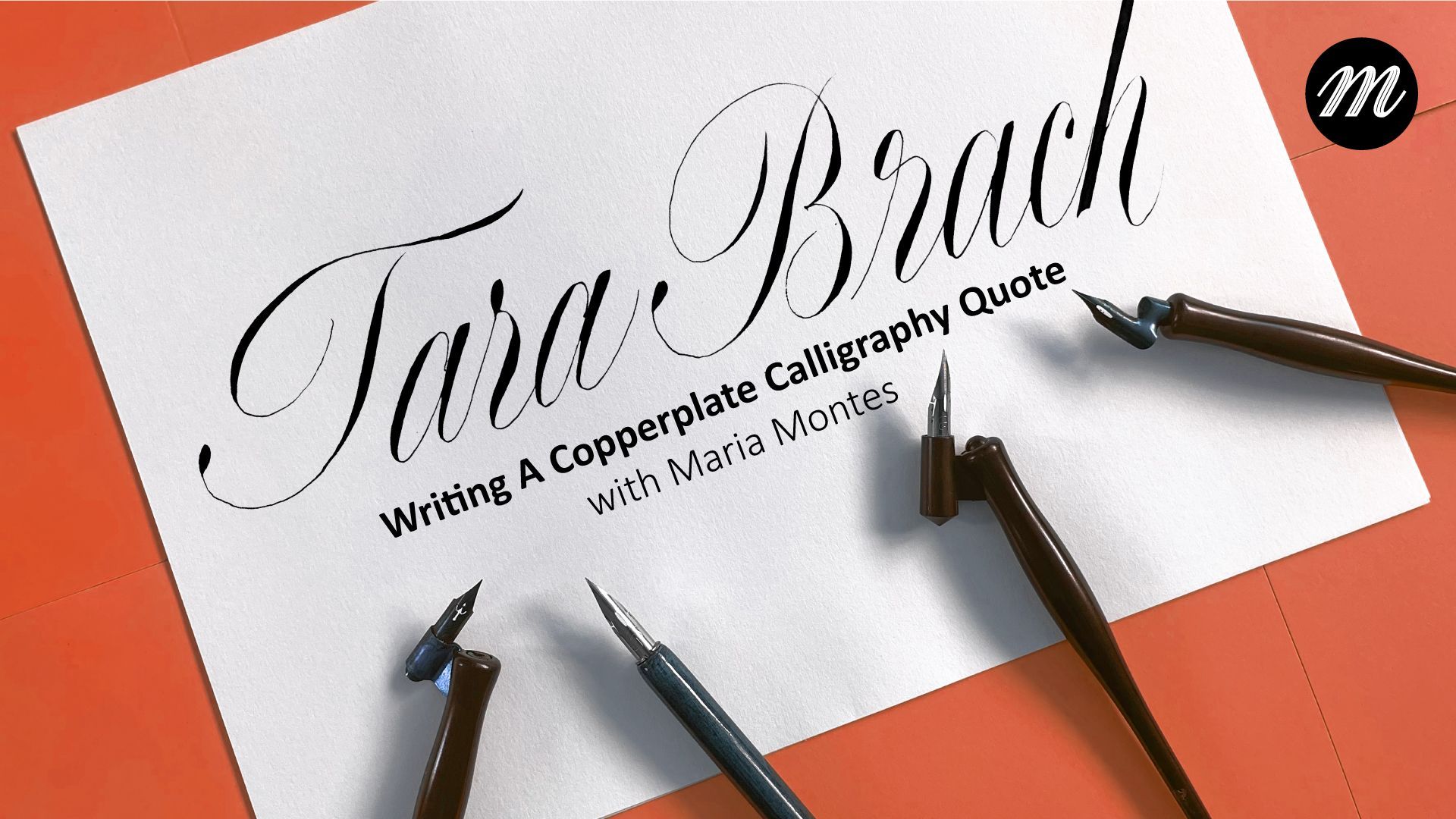
Photo credit: Writing Copperplate calligraphy | Quote by Tara Brach.
What inspired you to launch Copperplate Calligraphy courses, and how did the idea come about?
I had been teaching in-person calligraphy courses in Melbourne since 2014. In March 2020, all my education stopped completely which forced me to look for alternative ways to keep on going.
During the pandemic, and inspired by Tara Brach’s free YouTube lectures, I released my first educational video, which now has over 230,000 views.
Post-pandemic, my in-person calligraphy education—massively disrupted by two years of strict restrictions in Melbourne—transitioned to a live online education business. This shift opened worldwide opportunities, giving me the freedom to teach from anywhere.
In 2022 my partner and I started a nomadic journey outside Australia becoming clear that the online education model was going to be a better fit for my current lifestyle.
My
Copperplate calligraphy courses were always the first ones to sell out, so I decided to start with this calligraphy style and test the waters with Online Course Host. From 2014 to 2020 my audience was primarily Australian. Currently, I teach students worldwide, with an increasing audience coming from the US.
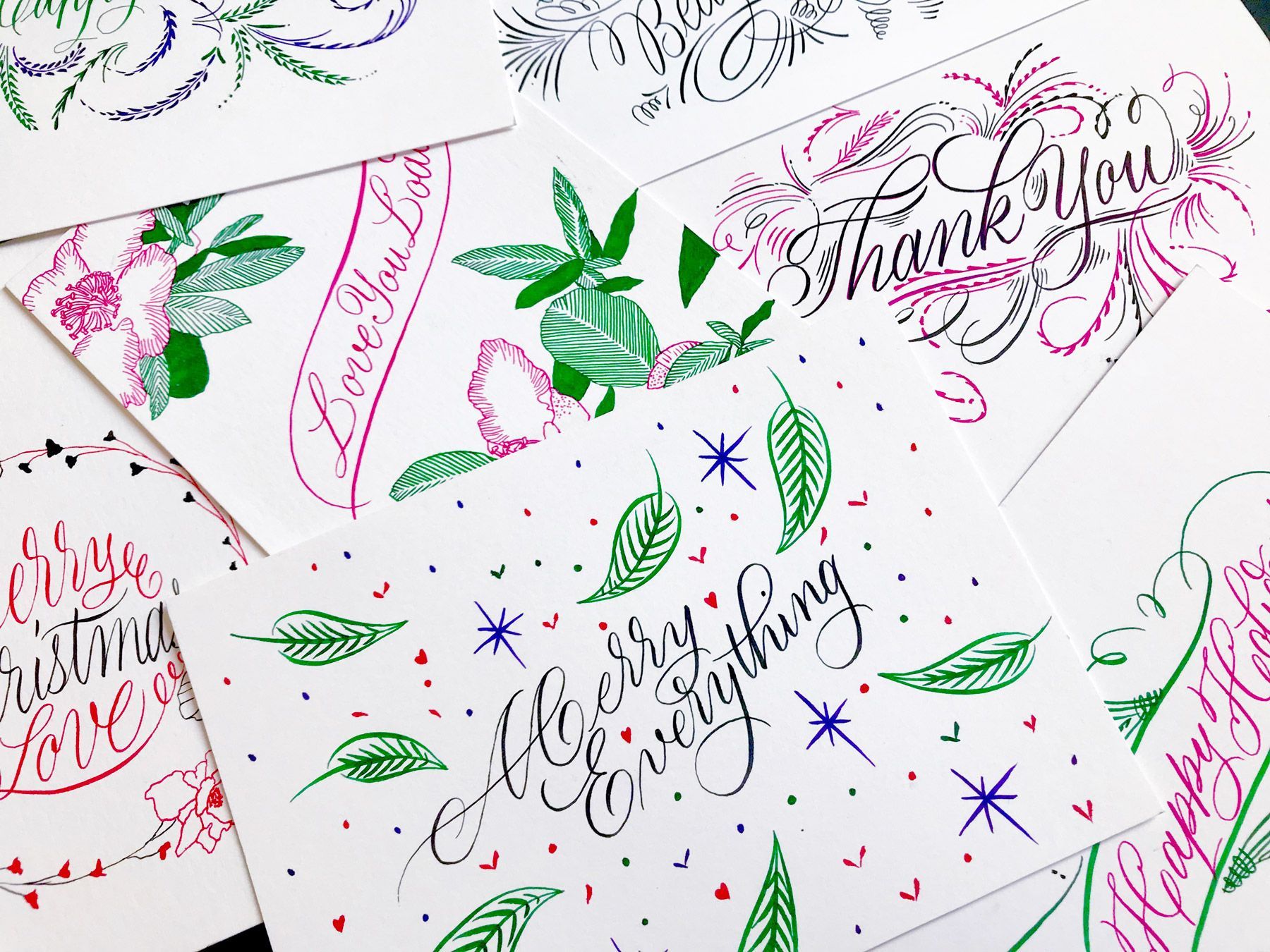
Design credit:
A series of greeting cards written out by Maria Montes using a Pentel Touch Sign Brush Pen.
Could you walk us through your journey from the initial concept to launching your first course?
In 2023 I launched my first pre-recorded online Copperplate calligraphy course. It took a lot of preparation as I had to consider a few additional I usually explain live to my students. This format forced me to analize my process in more detail, structure the course in a very clear way and offer as much supporting information as possible.
At that time I was still teaching live Copperplate calligraphy for total beginners (level 1) and intermediate students (level 2). I felt there was a big gap of skills between my two levels, so I designed my first pre-recorded course filling this specific gap.
I worked on the structure first, thinking about all the topics I wanted to give extra support as well as offering more in-detail information. I also devoted a few chapters to write longer texts, something I didn’t have time to cover in my Level 1 course.
Writing about the course overview, features and everything included took a while as well, but when finished, I was very happy with the result.
For recording I used Zoom and a document camera. I am very comfortable working from home, and can spend days in my pyjamas, so during the many days recording I dressed up every morning, did my hair and looked like a fully functioning human LOL!
The feedback from the first course was super positive and in 2024 I decided to launch all my live calligraphy courses as self-paced, pre-recorded learning experiences. This meant that all my students could complete my courses in their own schedule, with their own agenda + now unlimited access!
I received very positive feedback and some of my students now engage in private one-to-one tuitions where I work with their own timezones and we focus on the specific challenges they are facing.
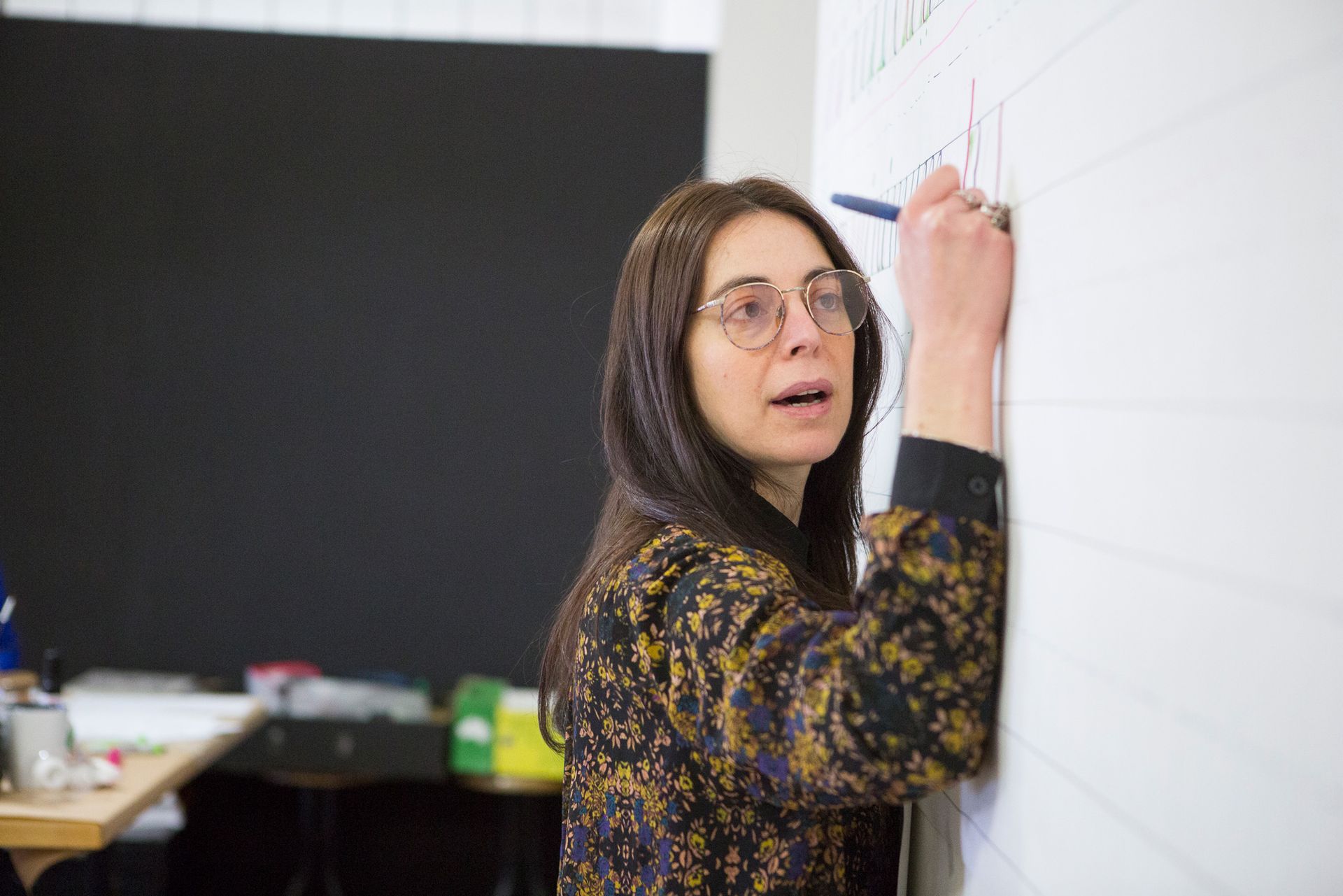
Photo credit : Mark Lobo at Rotson Studios in Naarm (Melbourne).
What was the biggest challenge you faced when starting out, and how did you overcome it?
Recording myself and explaining things in a clear and concise way was very important for me. I am not a native English speaker, so finding the right words was key for me. Like everything else, the more time I spent teaching online, and the more hours of video I recorded, the more comfortable I felt.
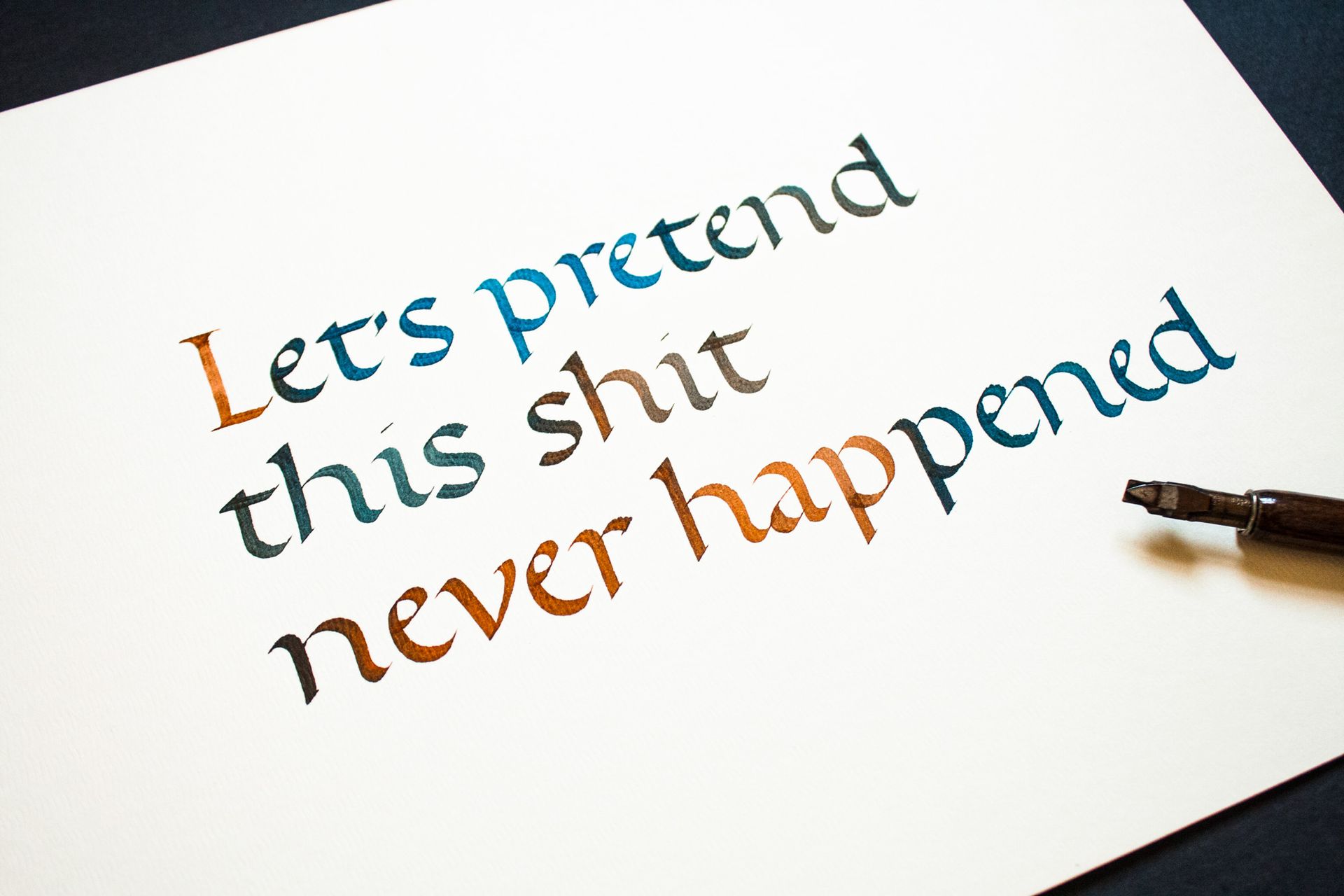
Design credit : 'Let's pretend this never happened'. Modern Carolingian written out by Maria Montes using a 3mm Brause nib and liquid watercolours.
What does your course creation process typically look like? (e.g., planning, content creation, and delivery)
I recently launched a new course called Intro to Neuland Calligraphy and these are the steps I followed:
Design the course syllabus:
What do I want to teach and what are the outcomes for the students?
I keep a consistent structure with my other courses. Many of my initial Copperplate calligraphy students have enrolled for other styles of calligraphy since they enjoyed my first course and discovered my personal teaching style. That means, my students are already familiarised with my course structure and I want to make them feel comfortable with the platform by displaying similar course sections across them.
- Intro to my course: A video of myself introducing the course and what they can expect.
- Materials needed
- Resources for them to download and print
- Hands-on lessons and my personal notes provided for each lesson
- Exercises with a specific outcome
- Personal portfolio of work showing applied examples of the calligraphy style we are learning.
- Additional external recourses for each calligraphy style where they can learn further about the subject.
After the syllabus has been designed, I start creating the guidebook and handouts in PDF format. Once I have a clear idea of what I want to teach, I start recording the main part of the course which are the hand-on lessons. I try to record three to four lesson per day. After a few days in a row recording, I feel much more comfortable with the camera and I also produce better work.
Once I finish the hands-on lessons, I record a few additional ones to publish on Youtube, as I believe this can help me to find a few new students.
Finally, I craft the thumbnails for the course, write the content description and record an additional video to launch the course on my email newsletter and Youtube.
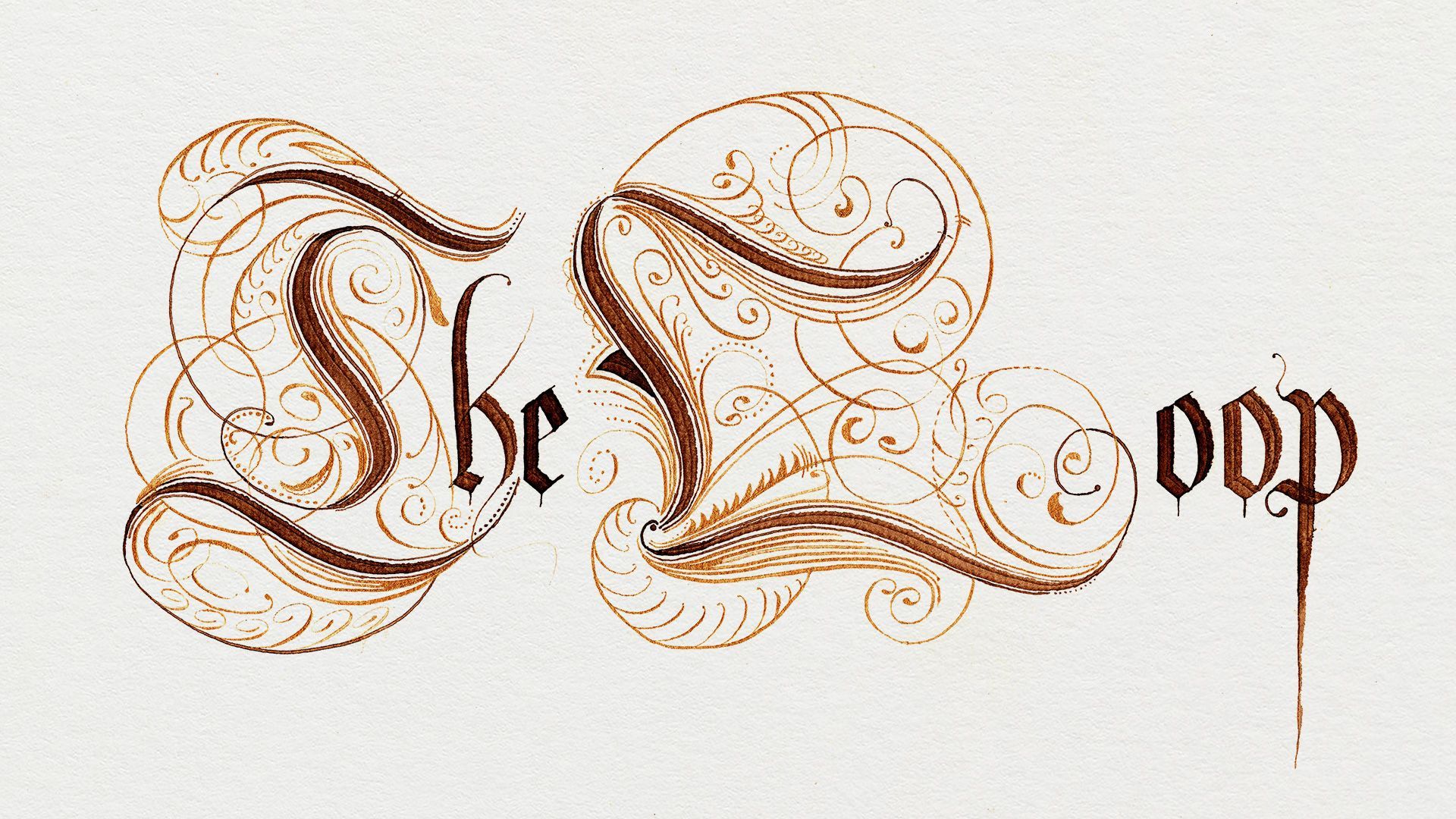
Design credit: ‘The Loop’ Blackletter calligraphy by Maria Montes.
How do you make sure your courses stand out in a competitive market, and which marketing strategies have worked best for you?
My calligraphy courses are a direct reflection of my 20 year-journey as a designer. They are unique for the following aspects:
- My background being a multilingual and multicultural designer
- My personal teaching style combining an attention to detail and in-depth approach while enjoying the learning process.
- My motto: progress is the inspiration
- My principles: Never stope learning, sharing your knowledge and create emotion with my work.
- My skillset of graphic and type designer, letterer, calligrapher and illustrator which informs my educational perspective.
- I keep my audience in mind, as I’m fully aware that calligraphy is not for everyone: professional graphic designers, professional type designers, design students looking to expand their typographic skill set, calligraphers looking to refine their skills, anyone with an interest in letters and visual communication and anyone looking for a mindful, creative and meditative practice.
My marketing strategies are a constant work in progress. If you are interested in launching your own courses, I would suggest investing as much time in creating it as in promoting.
I shared my first self-paced calligraphy course with my current audience on Instagram and Substack. There were a few sales but not enough, so I decided to develop my YouTube channel and use it to offer educational videos supporting my courses, letting people to know me and to discover my teaching style.
To support my pre-recorded calligraphy courses further, I have built a brand new website with the intention of helping me to find new students. My new site called Writing Calligraphy is the result of practicing regularly since 2011, and sharing knowledge since 2014. It is highly educational and full of information for anyone interested in getting started, or learning more about the art of writing.
I regularly communicate with my current students, as I know they will be the first ones interested in knowing about new course releases. I also offer them a discount after they have purchased a course to thank them for their ongoing support.
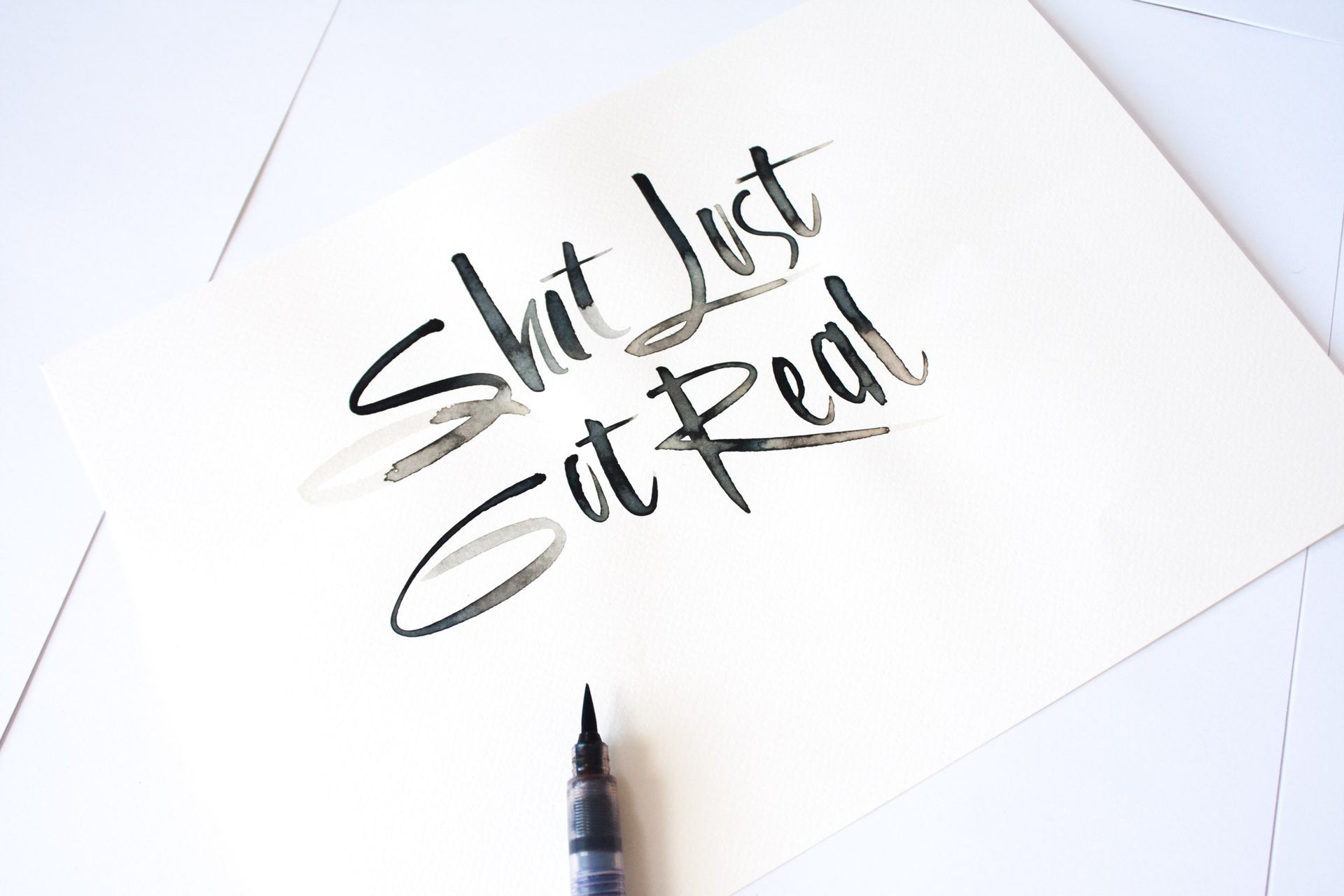
Calligraphy credit : ‘Shit Just Got Real’. Script brush calligraphy by Maria Montes.
What techniques do you use to keep your students engaged and motivated throughout the challenge?
I mix the length of my videos and the content in them. Some videos are about hands-on practice. Some videos are about presentations and historical context. Some videos are about my work and my professional struggles.
In my opinion, there are three main challenges in the self-learning pathway:
Finding Reliable Resources – With an overwhelming amount of information available, it’s difficult for beginners to identify trustworthy sources. To help with this, I add a section of additional resources in all my courses with book references and lectures from establish professionals.
Keeping Yourself Motivated – Staying motivated while learning alone can be tough. Joining a community helps by providing shared experiences and progress tracking. Another method is using past work as a benchmark for improvement—comparing old and new pieces can serve as inspiration to keep going.
Keeping Yourself Accountable – Without external deadlines, self-taught learners may struggle to stay on track. My experience as a self-taught textile designer demonstrates that real projects with real deadlines encourage focus and productivity. In calligraphy, balancing regular practice with concrete outcomes (e.g., postcards, logos, Instagram posts) helps sustain progress. Creating a project calendar with deadlines ensures accountability and consistency.
I have written extensively
about this in here if you are interested in this topic!
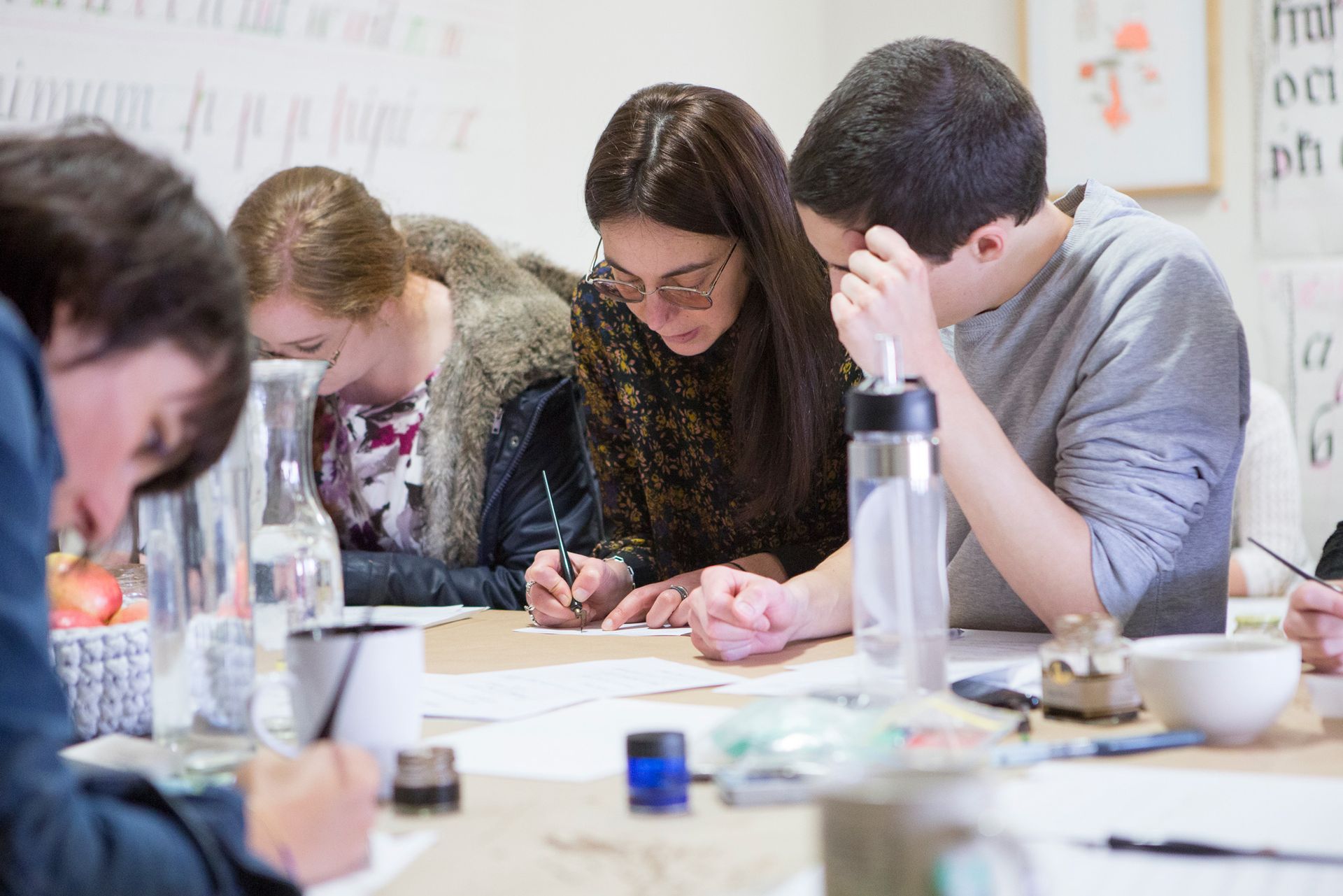
Photo credit : Mark Lobo at Rotson Studios in Naarm (Melbourne).
Have you received any memorable feedback from students that made you realize the impact of your work?
Yes! I have received many positive feedback that encourages me to keep on going. When you put something valuable out there, you never know who is watching. A lot of my students have told me how much they have learned, and how relaxing and meditative the experience has been improving their writing skills, their visual literacy and their mental health. Everyone of these emails mean a lot to me, because it validates the reasons why I share my knowledge and why I do what a do for a living.
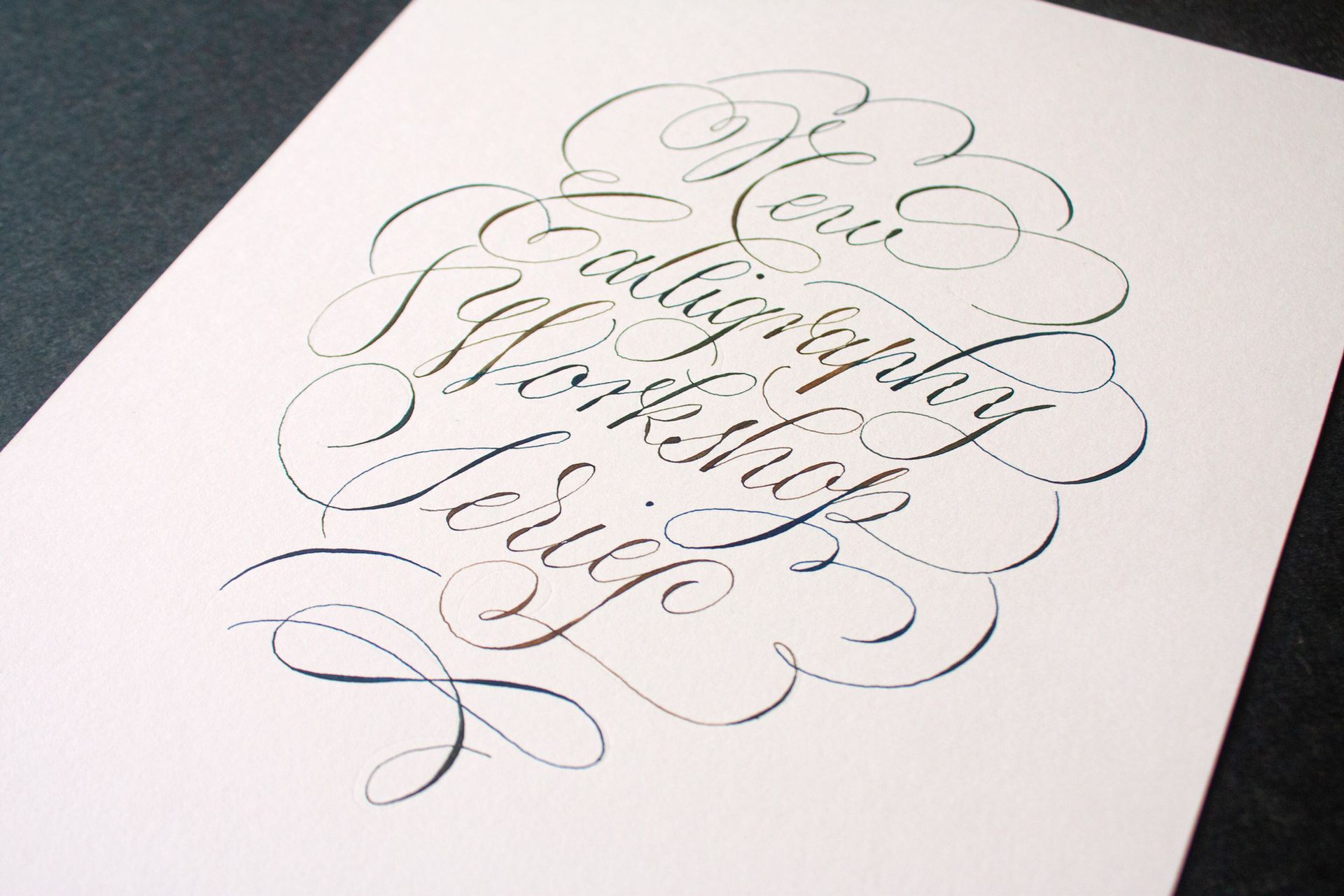
Design credit: 'New Calligraphy Workshop Series'. Copperplate calligraphy by Maria Montes.
What advice would you give to other course creators looking to grow and scale their business?
Love what you do first and foremost. Be clear with yourself about the reasons why you are doing it. Focus on the process and not only on the final outcome. Be patient and be consistent. Iterate, be flexible and be agile with your own learning process.
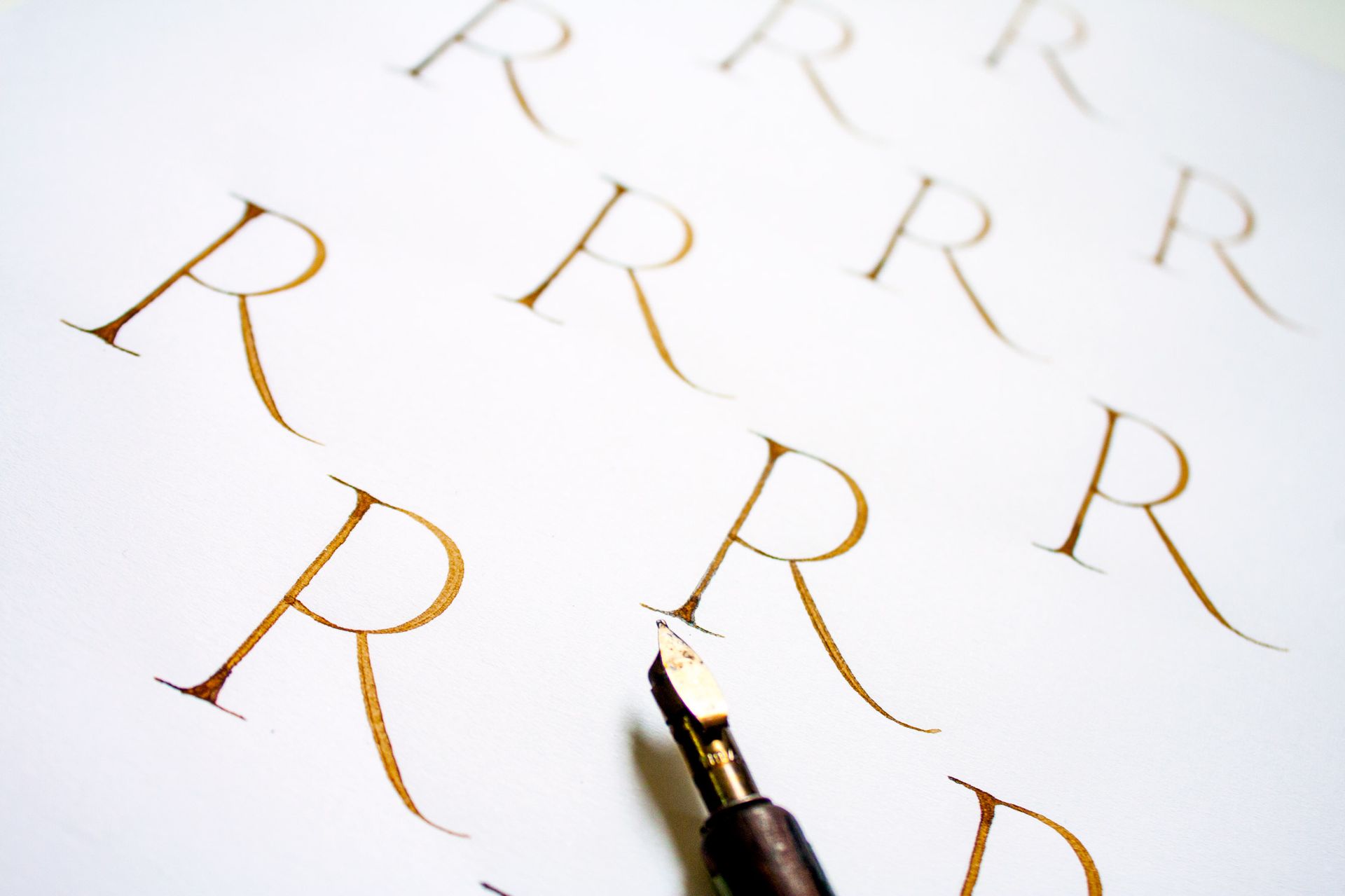
Design credit: ‘Roman Capital R’. Calligraphy by Maria Montes.
Looking back, is there anything you would have done differently when you first started?
Everything I did was necessary to get me where I am today. Everything in my career and life is connected. I may not see it in the present, but in hindsight, things often become evident.
Are there any productivity tips or techniques you rely on when managing multiple aspects of your business?
I use Toggl to track my time executing different tasks. I focus on one task at a time, as I feel more focused and productive in this way. I put my phone on ‘do not disturb’, and only check my inbox twice a day.
This will sound totally cliché but consistency can be a super power.
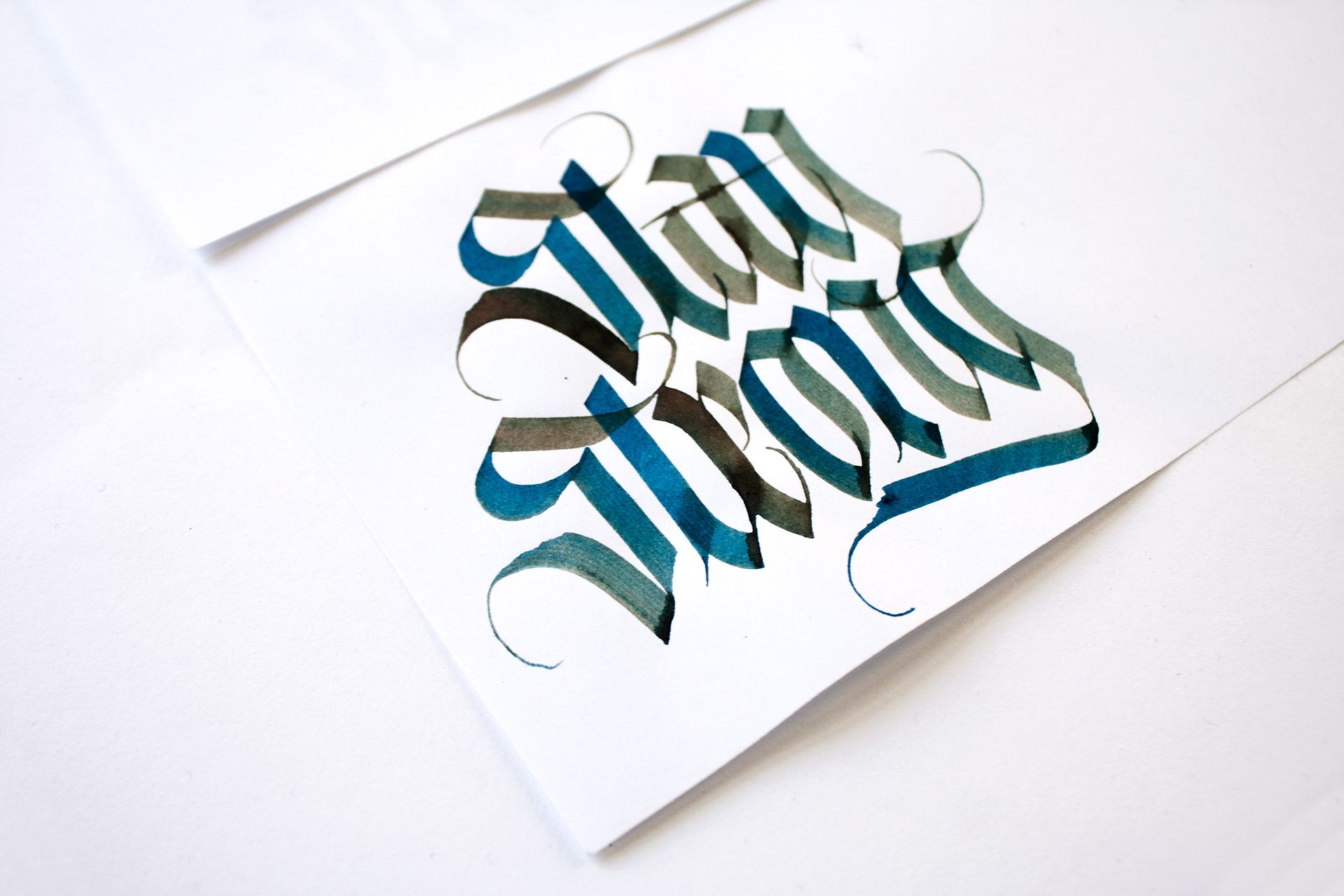
Design credit : 'Stay Strong’. Blackletter calligraphy by Maria Montes.
If you could share one piece of advice with someone just beginning their course creation journey, what would it be?
Put yourself in the shoes of the student you are teaching. What are they looking for in your courses?
Do you have an audience already? Build your audience beforehand and spend as much time promoting the course as creating it.
I'm currently offering
seven self-paced calligraphy courses, and I would love to have you on board!

Photo credit: Mark Lobo at Rotson Studios in Naarm (Melbourne).

